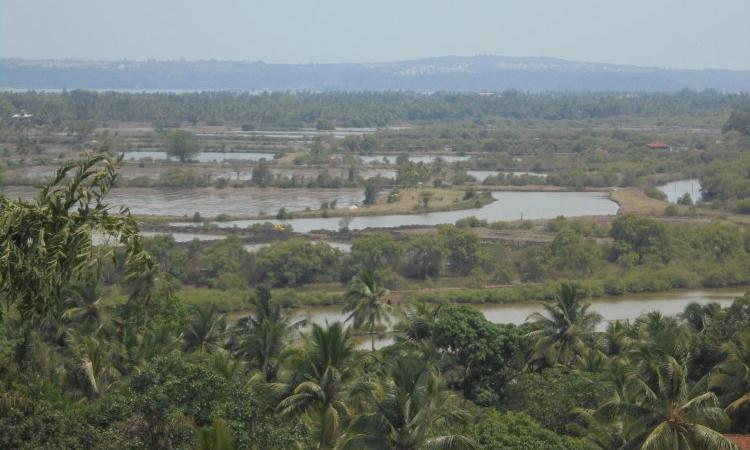
Goa government, farmers against MoEF for proposing re-designation of the state’s low lying lands
In its proposal, the National Centre for Sustainable Coastal Management (NCSCM), a scientific body under the Union Ministry of Environment and Forests, has redefined coastal areas in Goa as 'land', instead of marking them as tide-influenced water bodies. The state government, farmers and activists are up in arms against this decision because they fear it will open the doors for these low lying lands - locally called khazans - for uses other than agriculture and aquaculture, spelling doom for local farmers. Goa has 431.63 square kilometres of khazan area; 11.65 percent of Goa’s total area is khazan area, mainly along the coast and along Goa’s network of rivers and creeks. (Hindustan Times)
Lilagar river changes course, floods open cast mine in Korba
Following incessant rain in Chhattisgarh's Korba district, the Lilagar river, a subsidiary of the Hasdeo river, changed its course and flooded the open cast coal mine of South Eastern Coalfields (SECL) in Dipka town. As per the administration, the absence of a returning valve and proper pre-monsoon arrangements caused the incident, which submerged machines and mining equipment worth millions. Thankfully no lives were lost, with workers in the mine being rescued in the nick of time. Dipka is one of Asia's biggest coal mines; this incident is likely hit coal supply for the next two weeks, resulting in heavy losses to SECL. (Times of India)
Coonoor sets example by reviving its river
The Coonoor River, once fresh and clean, flows between two hills out of Coonoor town in the Nilgiris. In recent years, it has been on the receiving end of encroachments and dumping of garbage. Clean Coonoor, a local NGO, was prompted by a WWF India report, to clean and revive the river. They started by cleaning the culverts and replanting native grass varieties in the wetland. A feeder stream, that was reduced from 50 feet in width to just 12 feet, was the first to be cleaned. In 42 days, volunteers worked day and night, clearing 12 tonnes of soil, plastic and other debris, including an auto rickshaw and a couple of sofas, from the stream. Going forward, the district administration plans to set up a sewage treatment plant and enforce household garbage segregation. (Mongabay India)
Haryana witnesses decade's seventh deficient monsoon
Haryana suffers from yet another failed monsoon this year, with 19 out of the state's 21 districts experiencing deficit rainfall. The state is the second driest state in the country this year with a substantial rainfall deficit of 42 percent. The repeated failure of the southwest monsoon has led to a severe water crisis in the state, leading to an increasing dependence on groundwater which in turn, has resulted in a drastic drop in the state's water table. Moreover, the subdivision of Haryana, Delhi and Chandigarh was the driest in India this season and alarmingly, the subdivision is getting drier as the years pass. (The Weather Channel)
Punjab government plans to increase water flow in Kali Bein to drain out polluted water
With just a month to go for the 550th Gurupurab celebrations at Sultanpur Lodhi in Punjab, the Kali Bein continues to receive effluents and untreated water even as it readies to host lakhs of devotees. The government now plans to increase the flow of water into the Bein from 250 cusecs to 400 cusecs, in a bid to drain out polluted water. Along with this, there are also plans to put sodium oxychloride in the Kapurthala STP to decrease the level of E-coli and B-coli in the untreated water which is flowing from the STP into the Kali Bein. While the issue of pollution in the Kali Bein has been highlighted time and again, the administration has not been able to control the effluent flow into the river. (The Tribune)
This is a roundup of important news published between October 2 - 8, 2019. Also read policy matters this week.